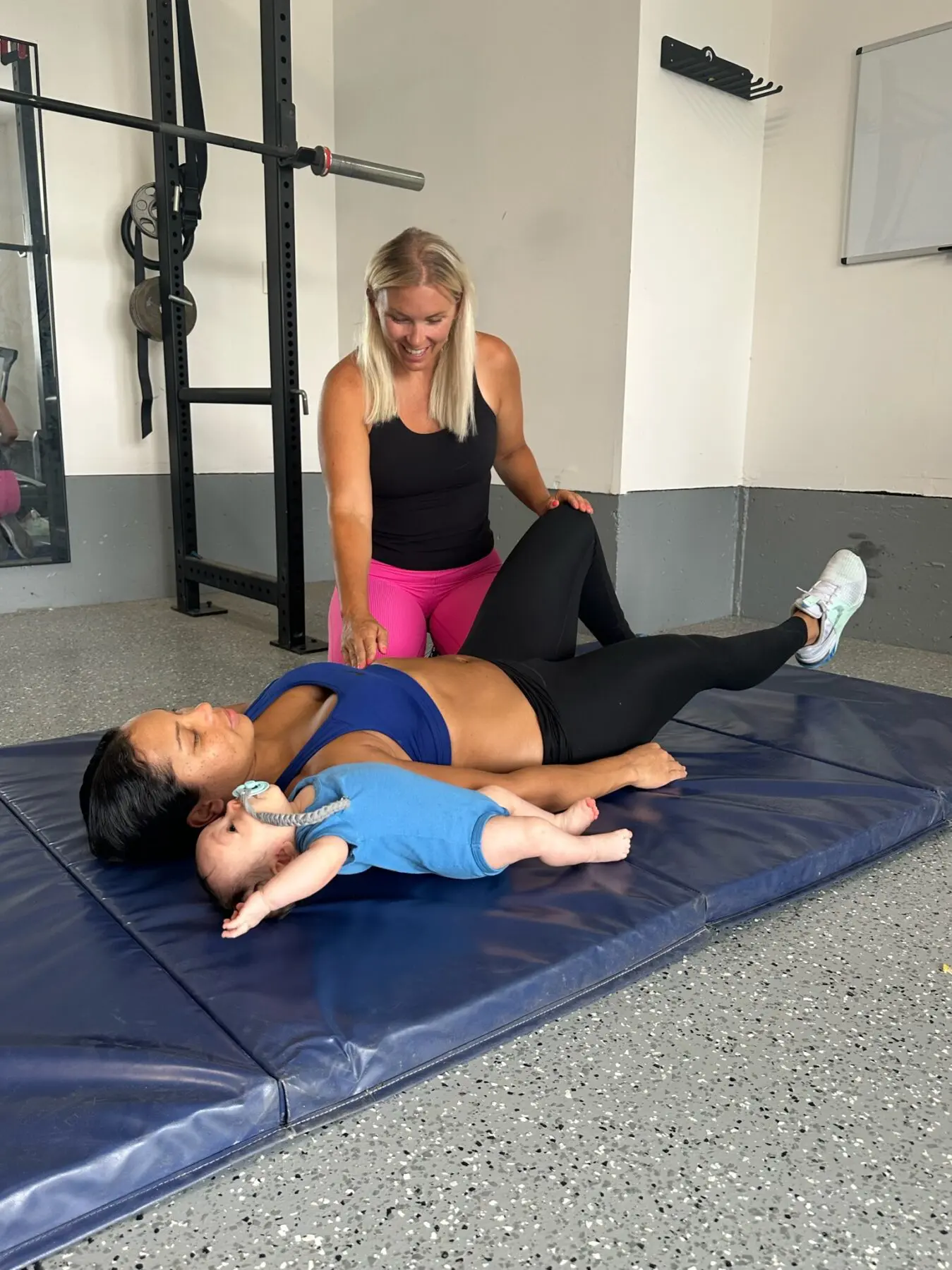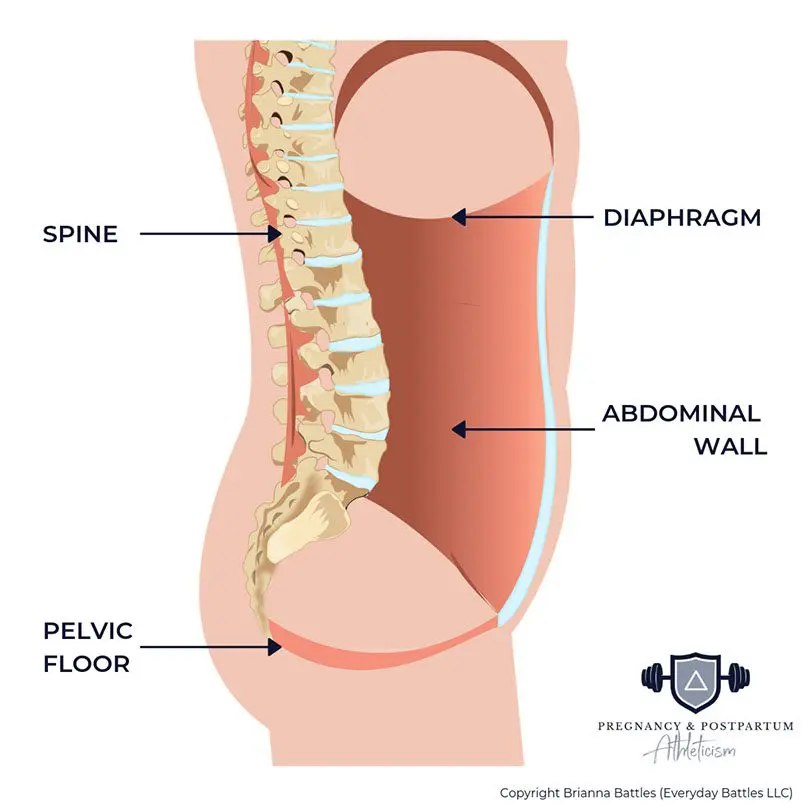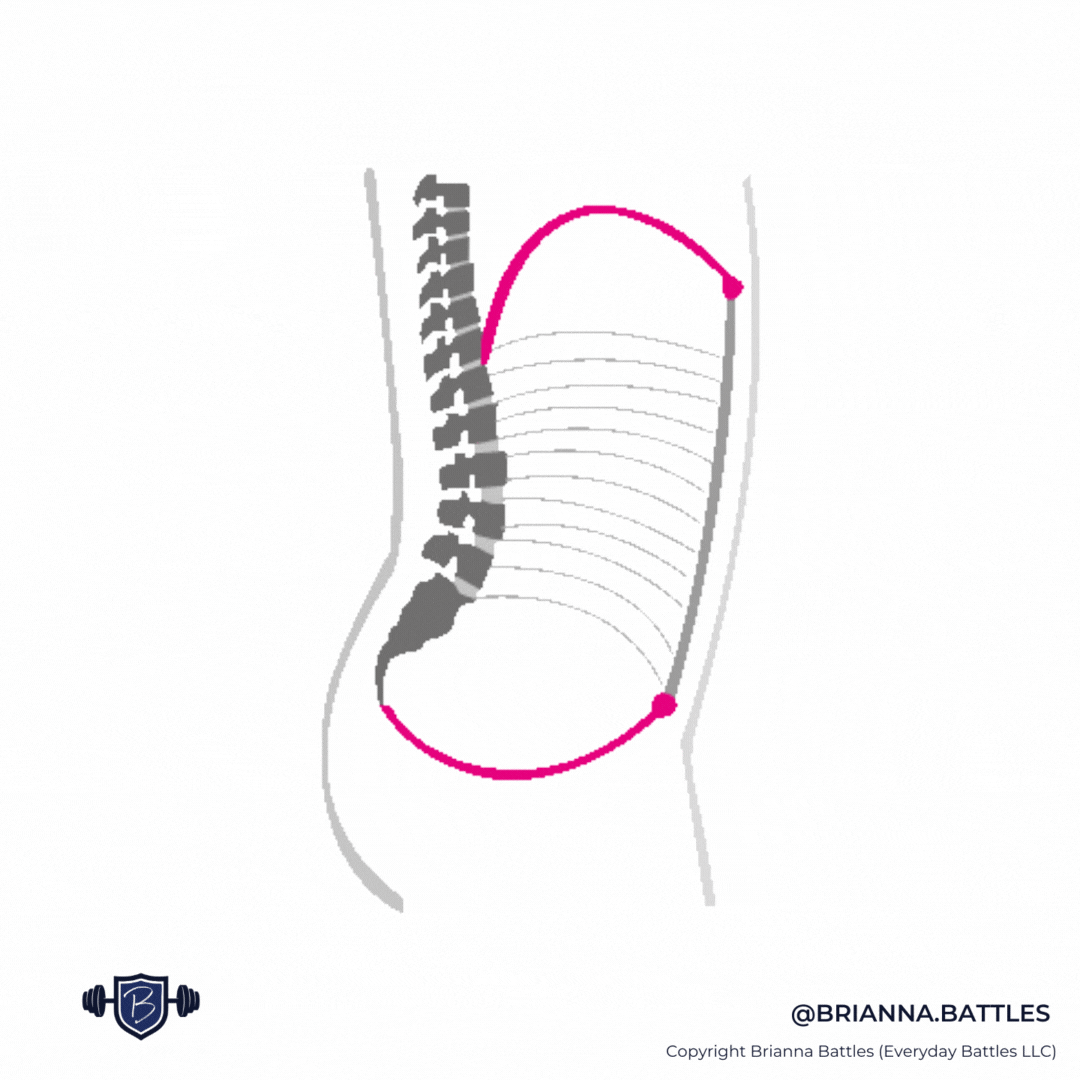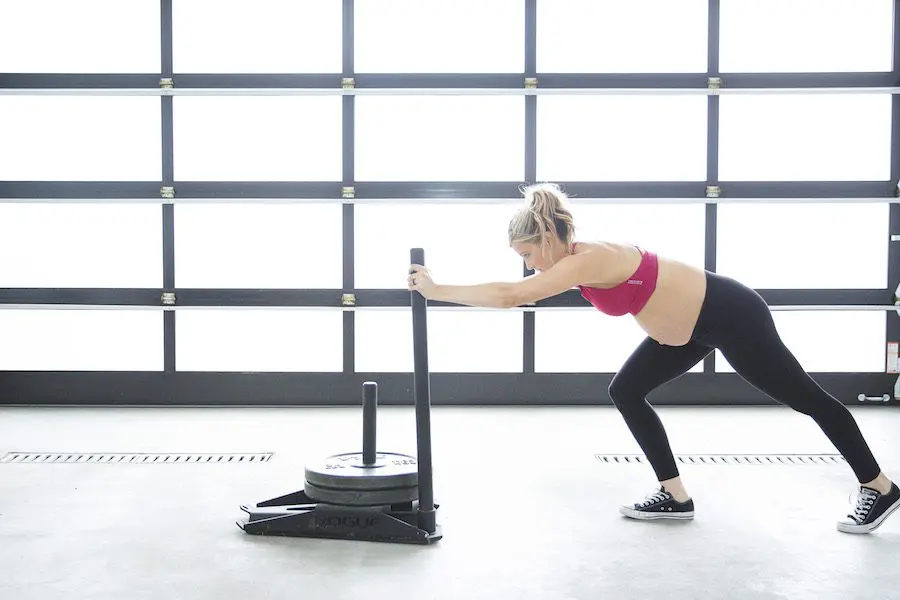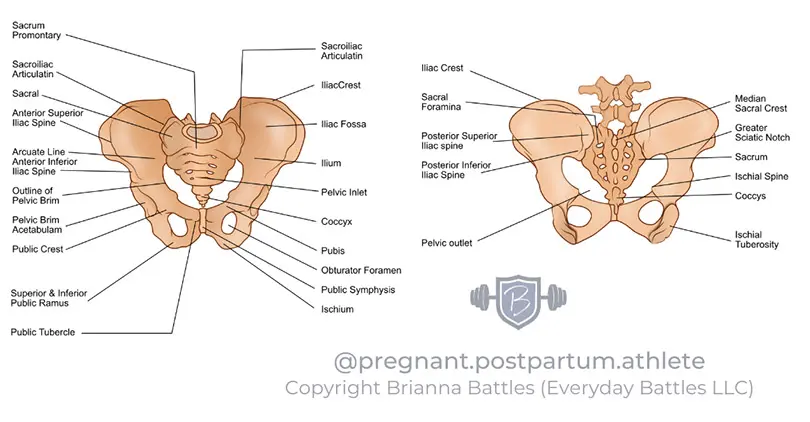If you’ve searched pregnancy or postpartum fitness to any degree, you’ve probably come across plenty of fears surrounding coning, ab separation, and Diastasis Recti. Let’s break down the facts on Diastasis Recti, including exercises that can improve it.
What is Diastasis Recti?
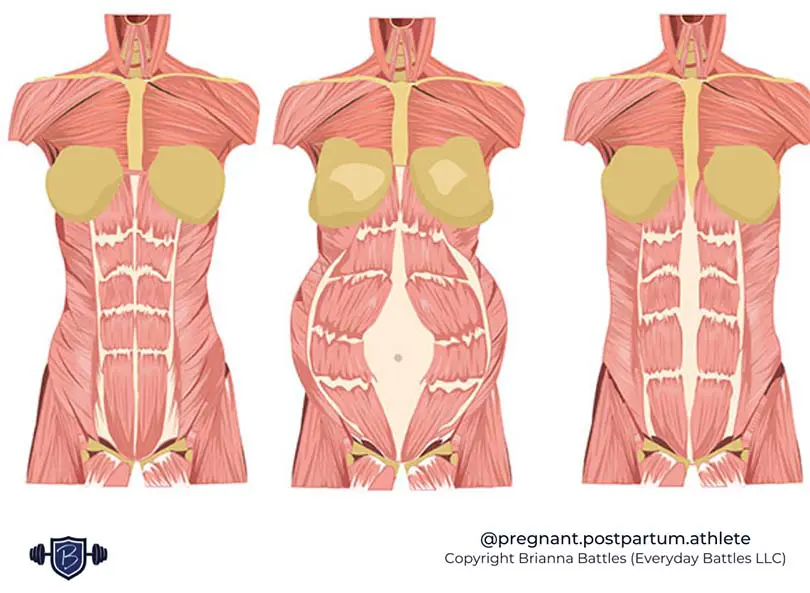
A Diastasis is a naturally occurring separation of the left and right side of the abdominal wall at the midline (the linea alba). The tissue of the linea alba is designed to stretch during pregnancy and sometimes it just stays a little more stretched out postpartum.
When looking at Diastasis, you test for both the width and tension of the linea alba. Anything up to 2 fingers wide with good tension is considered normal. If you have a slightly wider gap but are able to generate tension in the tissue, that’s not likely an area of concern from a functional standpoint.
But what if you want to close the gap? Keep reading to see what options you have to help improve your diastasis.
Is surgery needed to help repair ab separation?
While surgery can be an option to help bring together the rectus muscles, it’s not the only option nor does it address underlying strength or pressure management concerns.
If you struggle with pressure management and core strength prior to surgery, you’re likely to continue those struggles after surgical intervention. It’s important to progressively build core strength in all ranges of motion as well as learn to manage intra abdominal pressure in order to help improve your diastasis recti symptoms.
If you are opting for surgical correction of the abdominal wall, it is highly recommended that you visit a pelvic floor professional both prior to and after your procedure.
Can Diastasis Recti be corrected with exercise?
Exercise can be an excellent, non-invasive way to help manage and even improve Diastasis Recti.
To help improve your Diastasis Recti, you will want to focus on progressively building strength within the entire core to help strengthen the abdominal wall and approximate the rectus, including, but definitely not limited to, your deep core muscles, the transverse abdominis and obliques.
Pressure management is also very important when considering Diastasis Recti improvement. Excess pressure on the abdominal wall can lead to an increase in stretching and weakening of the linea alba.
What exercises should I avoid with diastasis recti?
There is no do or don’t do list when it comes to exercises to avoid with Diastasis Recti. Sit-ups, leg lifts, and heavy lifting could all be considered safe for someone with Diastasis Recti.
Instead of marking certain exercises as automatically off limits, we look at how you’re performing the exercise, if you’ve properly progressed to the exercise, and how you’re managing load and pressure within the exercise.
When we talk about Diastasis Recti, we often discuss coning as a sign or symptom. Coning is a term used to describe an increase in pressure and extension of the abdomen at the linea alba.
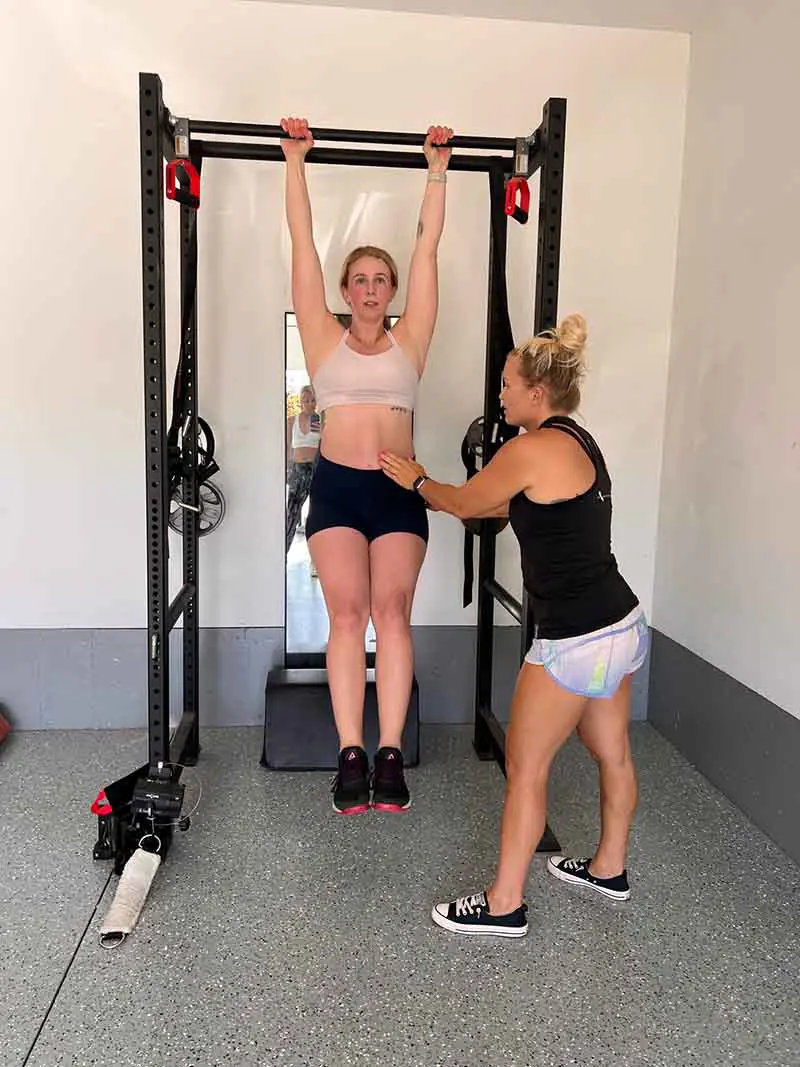
If you see coning present and the coning is soft to the touch, that may not be as much of a concern. If the area of coning is more firm to the touch, that may indicate excess pressure being pushed into the midline which warrants adjustments in your exercises.
How do I stop coning with exercise?
Sometimes we can help to manage the excess pressure associated with coning with form shifts, breathing pattern changes, or by activating the deep core muscles.
For example, if you have excess pressure into the midline with overhead movements such as snatch, pull up, or overhead press, are you able to bring your ribcage down a bit and not thrust out? This helps to better engage the core and help to lessen the pressure into the abdomen.
Adjusting your breathing patterns can also help to reduce pressure out into the abdomen. We do this by timing the exhale with the exertion phase of an exercise. With a sit-up, for example, you could exhale through the entire movement from start to finish. With a pull-up, you may want to exhale as you pull yourself up and inhale as you lower.
An intentional activation of the deep core muscles, the transverse abdominis, is another strategy that can help to increase core stability and reduce tension into the linea alba. For exercises like a plank or push-up, engage and contracting the deep core muscles can decrease the width of the linea alba and reduce pressure on the midline, alleviating the coning. We’re not looking for a strong contraction here. Think 10-15% engagement.
3 exercises to help you improve your Diastasis Recti
As mentioned, while there aren’t any exercises inherently off- limits for someone with Diastasis Recti, there are movement patterns that you can be performing to help improve your diastasis and overall core strength.
Listed below are three exercises that take you through rotation, anti-rotation, and flexion movement patterns to help you progressively build strength within your entire core.
1. Half Kneeling Band Rotations
The addition of a band provides extra tension to help you engage those deep core muscles. You can also sub a light dumbbell, cable machine, or landmine here.
2. Bird Dog
The bird dog is an excellent anti-rotational exercise for both pregnant and postpartum people. The goal here is as little movement within the trunk as possible which not only helps to strengthen the abdomen, but also helps to improve pelvic floor strength.
While sit-ups can be safe for diastasis recti, they may not be appropriate for you for now depending on your level of strength and ability to manage pressure. Let’s work up to sit-ups with a flexion exercise like this banded pull down.
Diastasis recti doesn’t have to limit you inside or outside the gym. By learning strategies to manage pressure and rebuilding strength in your entire core, you can help to improve your ab separation from Diastasis Recti.
If you’re ready for strategic, relatable programming that bridges the gap between core and pelvic floor rehab and the fitness you want to do, join the thousands of other athletes rebuilding core strength inside the 8-Week Postpartum Athlete Training Program.
Casey Thomas-Hardesty, MS
Casey is a P&PA coach and owner of Two Peas Wellness. She specializes in core and pelvic floor health as well as returning to fitness after pregnancy loss.
Read More: 3 Tips to Exercise

